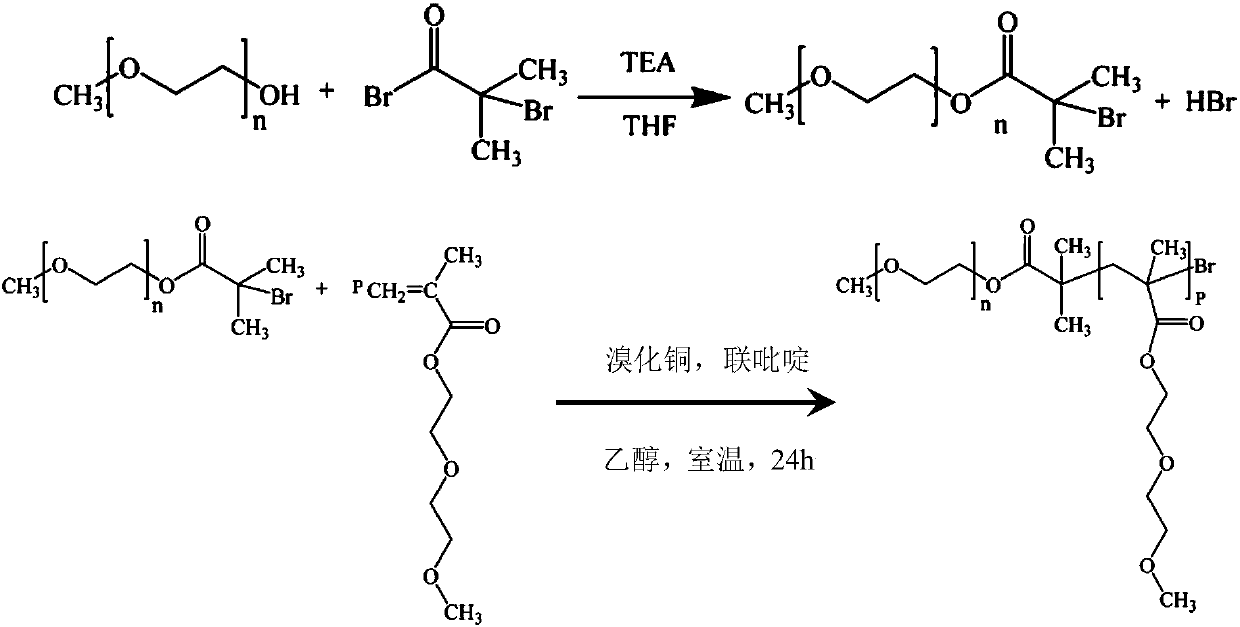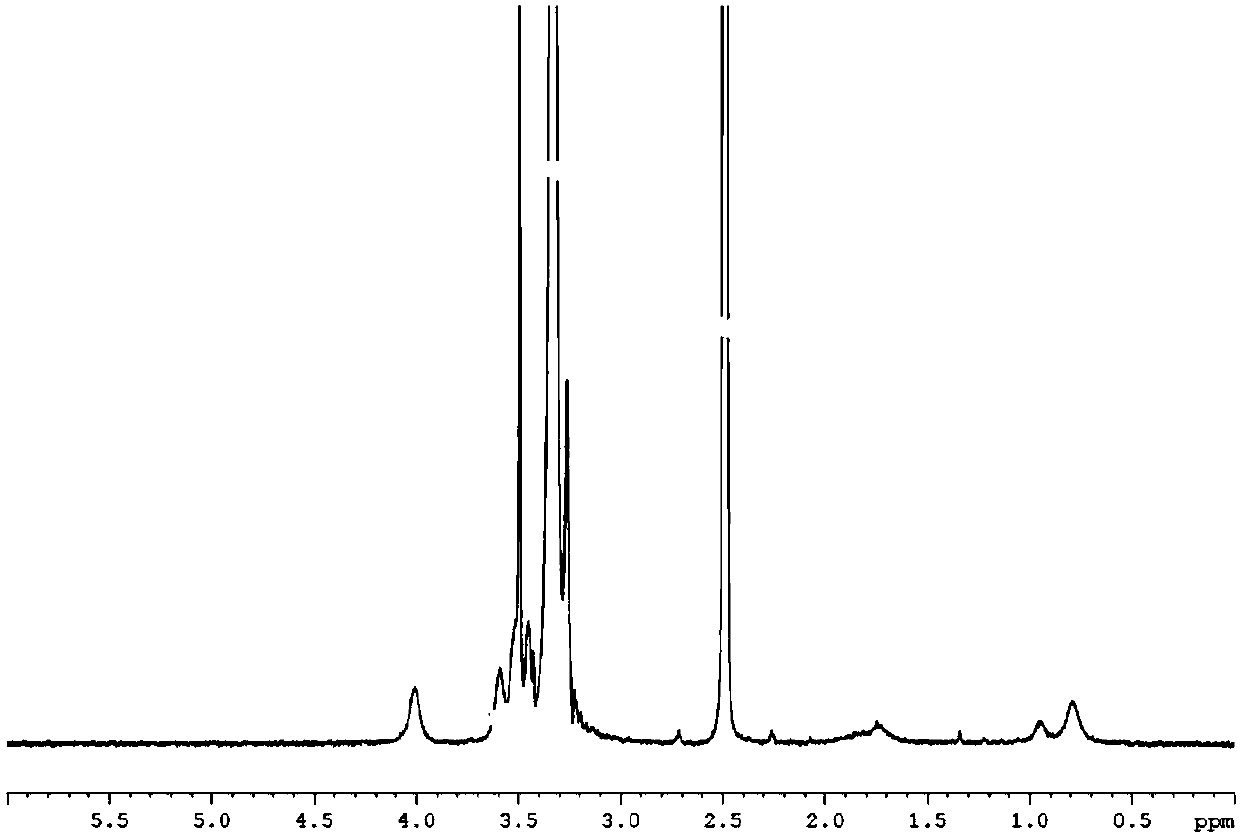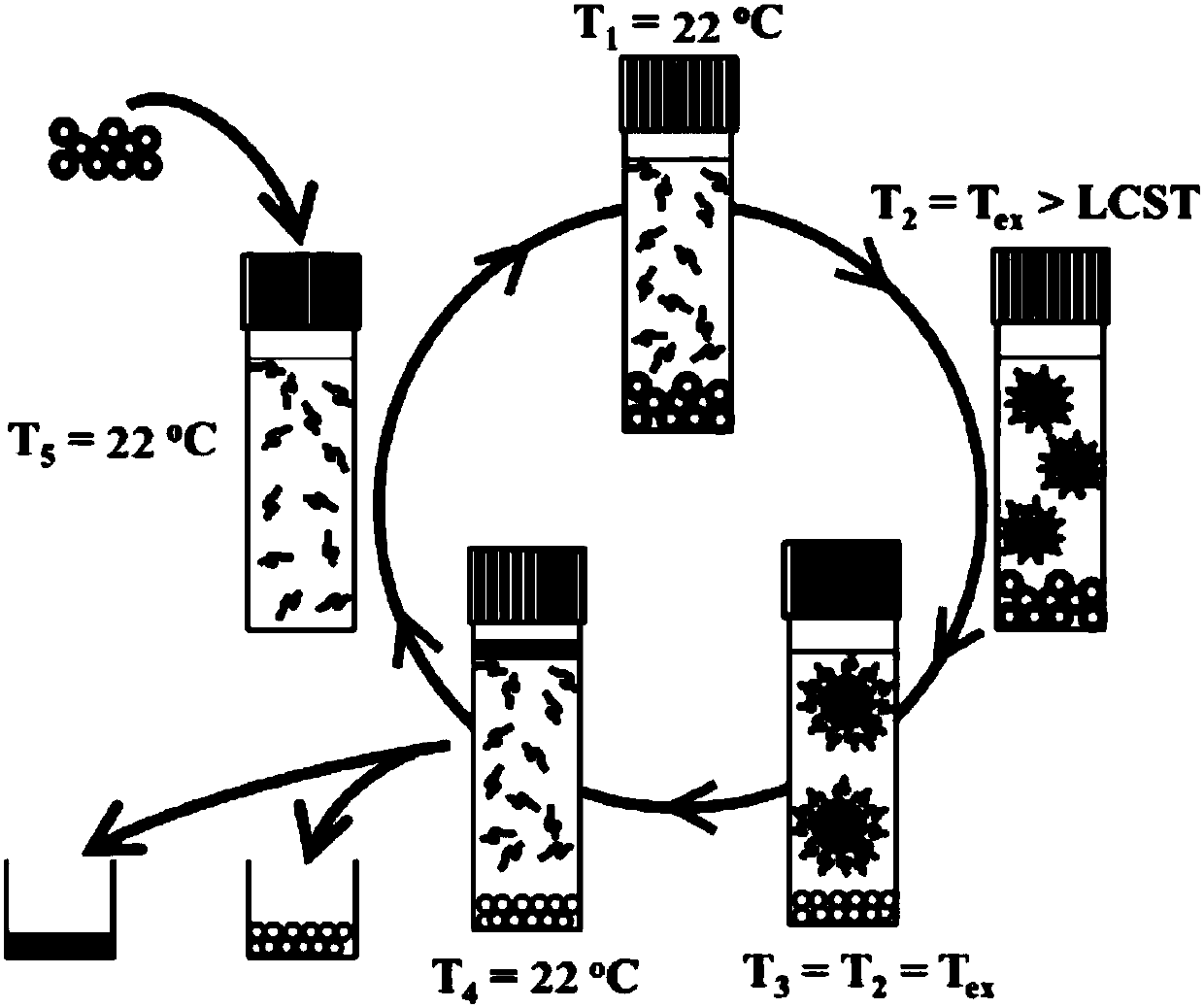Methoxy polyethylene glycol-polymethacrylate block copolymers as well as preparation method and application thereof
A technology of methoxy polyethylene glycol and polymethacrylic acid, which is applied in the directions of chemical instruments and methods, drilling compositions, etc. Problems such as poor flow conductivity, to achieve the effect of improving oil washing efficiency
- Summary
- Abstract
- Description
- Claims
- Application Information
AI Technical Summary
Problems solved by technology
Method used
Image
Examples
preparation example Construction
[0029] According to the second aspect of the present invention, the present invention provides a method for preparing methoxy polyethylene glycol-polymethacrylate block copolymer, the method comprising:
[0030] 1) Under the protection of inert gas, the bromine-terminated methoxypolyethylene glycol of the structure shown in formula (2) is used as macroinitiator, copper halide is used as catalyst, and bipyridine is used as catalyst ligand, and (3) The polymer monomer of the structure shown (2-methyl-2-acrylic acid-2-(2-methoxyethoxy) ethyl ester, MEO 2 MA) Perform atom transfer radical polymerization (ATRP) in an organic solvent to obtain a reaction solution;
[0031] 2) Contact the reaction solution with an oxygen-containing gas to terminate the polymerization reaction; then remove the solvent therein to obtain an oily mixture;
[0032]
[0033] Wherein, n=4-200; the molar ratio of the amount of the macroinitiator to the polymerization monomer is 1:4-200.
[0034] In order to obtain a...
Embodiment 1
[0059] This example is used to illustrate the block copolymer of the present invention and its preparation method.
[0060] The reaction flow chart is as figure 1 Shown:
[0061] (1) Preparation of macroinitiator (bromine-terminated methoxy polyethylene glycol)
[0062] In a completely dry three-necked flask, 5.5 g of mPEG was dissolved in 50 mL of tetrahydrofuran (THF), and an inert gas was passed through, and 0.46 mL of triethylamine was added to it. Then, place the flask in ice water at 0°C, and inject 0.82 mL of 2-bromoisobutyryl bromide into the flask through a syringe. The reaction solution was magnetically stirred at room temperature for 24 hours, and inert gas was kept circulating during the entire reaction to avoid oxygen. Entry. After the precipitate produced in the reaction was removed by centrifugal separation, magnesium sulfate was added to remove the water in the remaining solution. Then, the resulting clear solution was dropped into a large amount of hexane solvent ...
PUM
 Login to View More
Login to View More Abstract
Description
Claims
Application Information
 Login to View More
Login to View More - Generate Ideas
- Intellectual Property
- Life Sciences
- Materials
- Tech Scout
- Unparalleled Data Quality
- Higher Quality Content
- 60% Fewer Hallucinations
Browse by: Latest US Patents, China's latest patents, Technical Efficacy Thesaurus, Application Domain, Technology Topic, Popular Technical Reports.
© 2025 PatSnap. All rights reserved.Legal|Privacy policy|Modern Slavery Act Transparency Statement|Sitemap|About US| Contact US: help@patsnap.com



